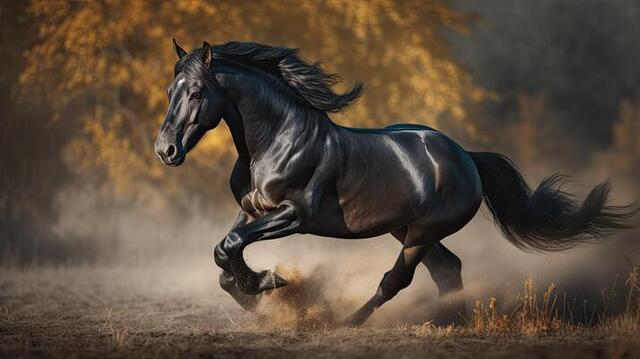Horses have been an integral part of human history for thousands of years. From their powerful presence on battlefields to their gentle companionship on farms, horses have played a key role in shaping our world. In this article, we’ll explore the five primary uses of horses throughout history and how they continue to serve humanity in various ways today. Whether for work, sport, therapy, or companionship, horses are incredibly versatile creatures.

Horses are running
Before cars, trains, and airplanes, horses were the main form of transportation for humans. They were used to pull carriages, carts, and even plows across vast landscapes. The use of horses for travel revolutionized the way societies operated, allowing for the movement of goods, people, and even armies across great distances.
Horse-drawn carriages were common in cities, while horseback riding became the primary mode of travel for many communities, especially in rural areas.
In the military, horses were used in warfare, helping soldiers cover long distances and navigate through difficult terrain. Cavalries played an important role in historical battles.
While horses are no longer the primary method of transportation today, they still provide an alternative means of travel in certain parts of the world and are commonly used in rural areas for carrying goods.
Horses have long been essential for labor, particularly in agriculture. Before tractors and modern machinery took over, horses were the primary draft animals used for plowing fields, pulling carts, and carrying heavy loads.
Plowing fields: Farmers used horses to plow large areas of land, which was vital for planting crops.
Carrying loads: Horses were also crucial for transporting harvested crops and other heavy materials around farms or to market.
Even today, horses are still used for various types of farm work, particularly in places where modern machinery may not be practical or cost-effective. Working horses are especially valuable in traditional farming practices and ranching, where they assist in rounding up livestock or helping with other agricultural tasks.
One of the most popular uses of horses today is for sports and recreation. From competitive events to leisurely rides, horses offer a wide range of activities that bring joy and excitement to millions of people around the world.
Horse racing is one of the oldest and most thrilling sports, with events like the Kentucky Derby attracting spectators from around the globe.
Horses bred specifically for speed and endurance compete in races, providing entertainment and an opportunity for gamblers and fans to test their luck.
Show jumping, dressage, and eventing are part of the Olympic Games and showcase the skill and precision of both horse and rider.
Trail riding and horseback riding are also enjoyed by many as recreational activities, allowing individuals to explore the outdoors and enjoy time with their horses in a relaxed setting.
Horses are not just work animals; they provide endless enjoyment in the world of sports and recreation, whether through competitive events or as part of outdoor leisure activities.
In recent years, horses have found a new role as therapeutic animals. Equine therapy is a growing field that involves using horses to help individuals with physical, emotional, and mental challenges.
Equine-Assisted Therapy: Horses are used to assist people with disabilities or emotional trauma. The rhythmic motion of horseback riding helps improve balance, coordination, and motor skills in individuals with physical disabilities.
Emotional healing: For those dealing with anxiety, PTSD, or depression, horses provide emotional support. Their calm demeanor and intuitive nature make them excellent companions for therapy.
Horses are particularly effective in therapy because of their ability to mirror emotions and respond to human behavior, which helps clients connect on a deeper level. Equine therapy has become a powerful tool for healing and personal growth.
In addition to their practical uses, horses are also beloved companions. For many people, horses are more than just working animals—they are trusted friends and partners that offer loyalty and affection.
Pet ownership: While horses require more space and attention than typical pets, many horse owners form deep, lasting bonds with their horses. These animals provide comfort, companionship, and an emotional connection that can be incredibly fulfilling.
Bonding and care: Caring for a horse involves daily attention, grooming, feeding, and exercise. This strong bond between horse and owner fosters a deep sense of responsibility and companionship.
Whether used for riding, therapy, or simply as pets, horses bring companionship and joy to countless individuals around the world. They are loyal, intelligent, and capable of creating meaningful relationships with their human caretakers.
Horses have been an essential part of human society for centuries, and their uses have evolved in fascinating ways. From their role in transportation and work to their place in sports, therapy, and companionship, horses continue to enrich our lives in numerous ways.
While modern technology has reduced the need for horses in some areas, these animals still serve a vital function in many parts of the world. Whether you’re enjoying a horseback ride through the countryside, watching an exciting horse race, or bonding with a beloved companion, horses remain one of the most versatile and important animals in human history.
animal tags: horses
We created this article in conjunction with AI technology, then made sure it was fact-checked and edited by a Animals Top editor.